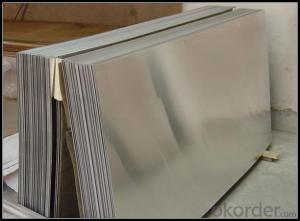Aluminum, a silvery-white metal, has been a cornerstone in the electrical industry for over a century. Its unique properties make it an indispensable material for various applications. Let’s dive into the world of aluminum and explore its significance in the electrical industry, with a touch of personal flair and a sprinkle of emotion to make this journey engaging and relatable.
A Lighter Load for Our Planet
Imagine carrying a heavy load, day in and day out. Now, picture that load being significantly lighter without compromising on strength. That’s the beauty of aluminum. It’s lightweight compared to other conductors, such as copper, but don’t be fooled by its lightness; it’s a strong contender in the electrical world. This property alone has revolutionized the way we transmit and distribute power, making it more efficient and environmentally friendly.
Conductor of Current, Conductor of Change
Aluminum’s conductivity is about two-thirds that of copper, but its lower density allows for a larger cross-sectional area in the same weight, compensating for the lower conductivity. This means that aluminum can carry the same amount of current as copper, but with less material, which translates to cost savings and reduced energy loss. It’s a win-win for both the industry and the environment.
The Corrosion-Resistant Warrior
In the electrical industry, materials are often exposed to harsh environments. Aluminum’s resistance to corrosion is a game-changer. It forms a protective oxide layer when exposed to air, which prevents further oxidation. This self-healing property ensures the longevity of aluminum components, reducing maintenance costs and downtime. It’s like having a superhero guarding your electrical infrastructure.
Sustainability’s Shining Star
Sustainability is no longer a buzzword; it’s a necessity. Aluminum’s sustainability comes from its ability to be recycled indefinitely without losing its properties. This means that once aluminum is used in electrical applications, it can be recycled and reused, reducing the need for new raw materials and the associated environmental impacts. It’s a true testament to the circular economy in action.
The Versatile Performer
Aluminum’s versatility knows no bounds. It’s not just about being a good conductor; it’s also about adapting to various roles. Aluminum is used in electrical machinery, transformers, and even in renewable energy systems like solar panels and wind turbines. Its adaptability makes it a favorite among engineers and designers who are constantly pushing the boundaries of innovation.
The Economic Powerhouse
The economic benefits of aluminum in the electrical industry are hard to ignore. It’s abundant, which means it’s cost-effective. The ease of drawing aluminum into wires and shaping it into various components contributes to its widespread use. It’s a material that offers high performance at a competitive price, making it accessible to a broader range of projects and applications.
The Future of Aluminum in the Electrical Industry
As we look to the future, aluminum’s role in the electrical industry is set to expand. With the push for greener energy solutions and smarter grids, aluminum will continue to be a key player. Its lightweight, high-strength, and corrosion-resistant properties make it an ideal material for the next generation of electrical infrastructure.
In Conclusion
Aluminum’s significance in the electrical industry is multifaceted. It’s not just about the technical aspects; it’s also about the impact it has on our environment, economy, and future. As we continue to innovate and push the boundaries of what’s possible, aluminum will remain a shining example of how materials can contribute to a better, more sustainable world. So, the next time you flick a switch or charge your device, remember the humble aluminum that makes it all possible.

